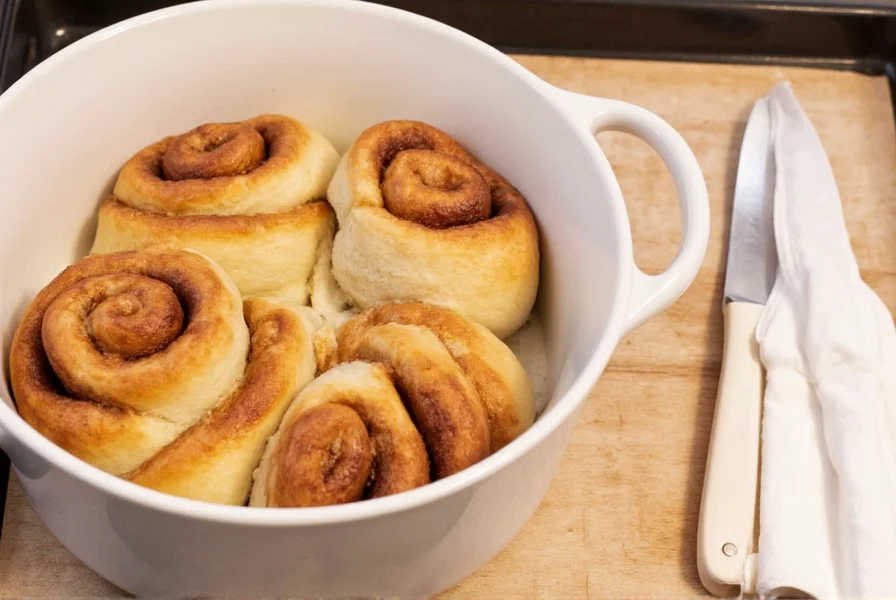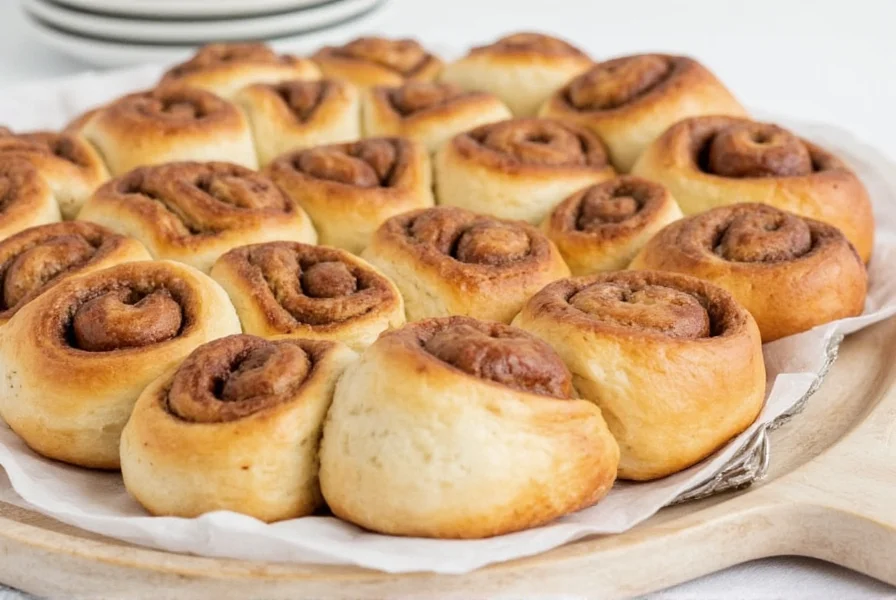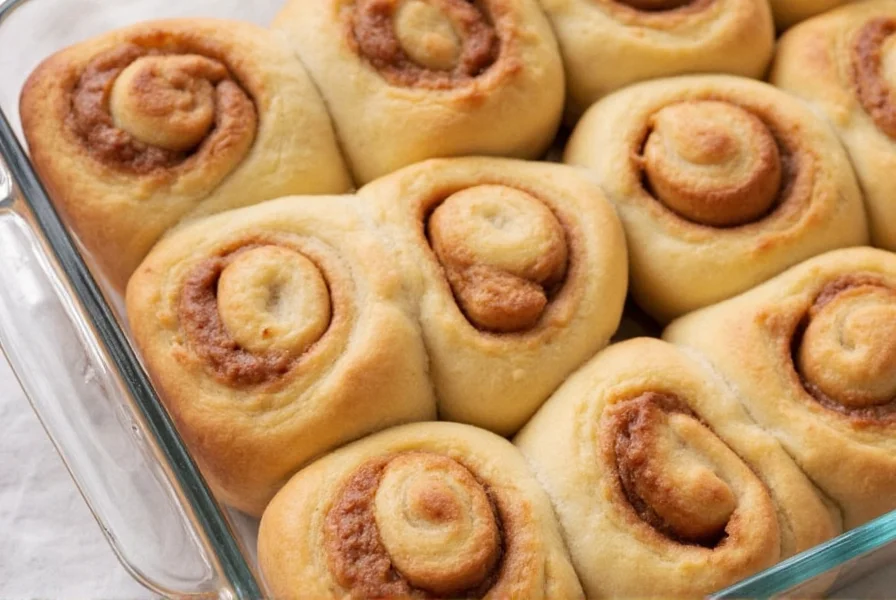There's nothing quite like waking up to the aroma of freshly baked cinnamon rolls. The overnight method transforms this beloved breakfast treat from a morning chore into a stress-free delight. By preparing your cinnamon roll dough the night before and letting it rest in the refrigerator, you'll achieve bakery-quality results with minimal morning effort.
Why the Overnight Method Works Best
The magic of refrigerator cinnamon roll dough lies in the slow fermentation process. When yeast dough chills overnight, enzymes have more time to break down starches into sugars, creating complex flavors you simply can't achieve with same-day preparation. This refrigerator cinnamon roll dough technique also develops gluten structure gradually, resulting in exceptionally tender rolls with that perfect melt-in-your-mouth texture.
Essential Ingredients Breakdown
Understanding each component's role ensures consistent success with your make-ahead cinnamon rolls. Don't substitute blindly—each ingredient serves a specific purpose:
| Ingredient | Function | Professional Tip |
|---|---|---|
| Active dry yeast | Leavening agent for rise | Use fresh yeast; test in warm milk before mixing |
| Bread flour | Higher protein for structure | Measure by weight (120g/cup) for accuracy |
| Unsalted butter | Flakiness and flavor carrier | Room temperature for proper creaming |
| Dark brown sugar | Moisture and deep caramel notes | Pack firmly for consistent measurements |
Step-by-Step Overnight Cinnamon Rolls Recipe

Evening Preparation (20 minutes)
- Mix dough: Combine warm milk (110°F), yeast, and 1 tsp sugar. Wait 5-10 minutes until foamy. In stand mixer, beat butter and sugars, then add eggs one at a time. Mix in yeast mixture, then gradually add flour and salt until smooth.
- First rise: Cover bowl and let rest at room temperature for 1 hour until doubled.
- Prepare filling: Mix 1 cup dark brown sugar, 3 tbsp cinnamon, and ¼ cup melted butter.
- Roll and cut: Roll dough into 18x12 inch rectangle. Spread filling evenly, leaving ½ inch border. Roll tightly from long side, pinch seam, and cut into 12 equal rolls.
- Refrigerate: Place rolls in greased 9x13 baking dish, cover tightly, and refrigerate 8-12 hours.
Morning Baking (35 minutes)
- Remove rolls from refrigerator 1 hour before baking to take chill off.
- Preheat oven to 350°F while rolls warm slightly.
- Bake 25-30 minutes until golden brown and internal temperature reaches 190°F.
- Cool 5 minutes, then top with cream cheese frosting.
Troubleshooting Common Issues
Even experienced bakers encounter challenges with cinnamon rolls that rise overnight. Here's how to solve frequent problems:
- Dense rolls: Over-flouring is the most common culprit. Measure flour by weight (120g per cup) or spoon-and-level method. Dough should be slightly sticky but manageable.
- Filling leaking: Ensure proper seal by pinching the dough seam and placing cut-side down in the pan. Don't overfill with filling.
- Uneven rising: Keep dough at consistent refrigerator temperature (38-40°F). Avoid placing near the door where temperatures fluctuate.
- Dry texture: Don't overbake. Remove when internal temperature hits 190°F. The rolls will continue cooking from residual heat.
Storage and Serving Recommendations
Your perfect overnight cinnamon rolls are best enjoyed fresh from the oven, but proper storage maintains quality:
- Store leftovers in airtight container at room temperature for up to 2 days
- Reheat individual rolls in microwave for 15-20 seconds
- Freeze unbaked rolls for up to 3 months—thaw overnight in refrigerator before baking
- Serve with strong coffee or cold milk to balance the sweetness

Frequently Asked Questions
Can I use instant yeast instead of active dry for overnight cinnamon rolls?
Yes, you can substitute instant yeast 1:1 for active dry yeast in this recipe. The primary difference is instant yeast doesn't require proofing in liquid first. Simply mix it directly with the dry ingredients. Both types work well for the overnight method since the extended fermentation time accommodates either yeast variety.
Why do my overnight cinnamon rolls sometimes collapse after baking?
Collapsing usually occurs when the rolls are underbaked or when the oven temperature is too high. Ensure your oven is properly calibrated and bake until the internal temperature reaches 190°F. The rolls should spring back when lightly touched. Avoid opening the oven door during the first 20 minutes of baking, as temperature fluctuations can cause collapse.
How can I prevent the cinnamon sugar filling from leaking out during baking?
To prevent filling leakage, ensure you properly seal the dough roll by pinching the seam firmly. Place the rolls cut-side down in the baking dish. Don't overfill with filling—use the recommended 1 cup brown sugar to 3 tbsp cinnamon ratio. Chilling the cut rolls for 15 minutes before baking helps the filling set initially, reducing leakage during the early baking phase.
Can I extend the refrigeration time beyond 12 hours for my make-ahead cinnamon rolls?
While 8-12 hours is ideal, you can refrigerate cinnamon roll dough up to 18 hours without significant quality loss. Beyond 18 hours, the yeast may become overactive, causing the rolls to rise too much and potentially collapse. If you need to delay baking further, after 18 hours transfer the pan to the freezer. When ready to bake, thaw overnight in the refrigerator then proceed with the baking instructions.











 浙公网安备
33010002000092号
浙公网安备
33010002000092号 浙B2-20120091-4
浙B2-20120091-4